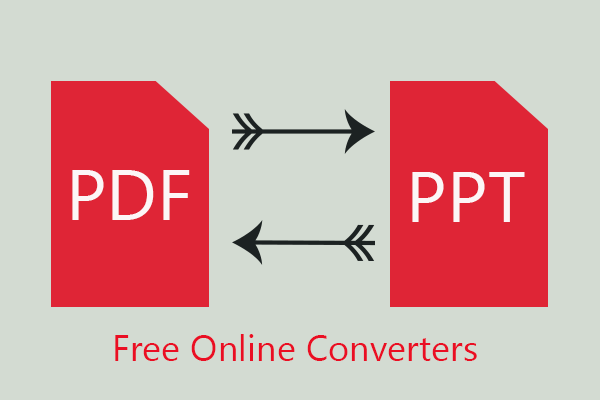Table of Contents
Converting a PowerPoint file into PDF format is a common need for students, professionals, and educators alike. Whether you’re preparing for a meeting, submitting a report, or sharing content securely, PDF format offers consistent layout and universal accessibility. In this guide, we’ll explore three reliable methods to convert PowerPoint presentations to PDF — on Mac, Windows, and using Google Slides. We’ve also included a comparison table and useful tips to ensure the best results.

1. How to Convert PowerPoint to PDF on Mac
macOS offers two easy ways to turn your PowerPoint presentations into PDF files using the built-in PowerPoint app:
Method 1: Save As PDF
- Open your PowerPoint presentation.
- Click on the File menu.
- Select Save As.
- Choose where to save your file.
- From the File Format dropdown, select PDF.
- Click Save.
Method 2: Export as PDF
- Open the File menu.
- Click Export.
- Select PDF as the file format.
- Choose a save location.
- Click Export to complete.
Note: Both options work seamlessly and preserve most formatting and design elements.
2. How to Convert PowerPoint to PDF on Windows
Windows users can follow these steps within Microsoft PowerPoint (2010 and above):
- Open the PowerPoint file.
- Click File.
- Select Save & Send.
- Click Create PDF/XPS Document.
- Choose the destination and filename.
- Click Publish to create the PDF.
This built-in feature works well without needing any third-party tools.
3. How to Convert PowerPoint to PDF Using Google Slides (Online)
If you don’t have PowerPoint installed, Google Slides is a convenient online alternative:
- Visit Google Slides.
- Click the red + button to create a new slide deck.
- Open the File menu, then click Open.
- Go to the Upload tab and select your PowerPoint file.
- Once the file opens, go to File > Download.
- Choose PDF Document (.pdf).
- Save the file to your device.
Tip: Make sure your formatting remains intact, as Google Slides may slightly alter the layout of imported .ppt files.
4. Comparison Table: Which Method is Right for You?
| Feature / Platform | Mac | Windows | Google Slides |
|---|---|---|---|
| Requires PowerPoint | ✅ Yes | ✅ Yes | ❌ No |
| Internet Required | ❌ No | ❌ No | ✅ Yes |
| Steps to Convert | 5–6 steps | 6 steps | 7 steps |
| Keeps Original Formatting | ✅ Mostly | ✅ Mostly | ⚠️ Sometimes varies |
| Best For | Apple users | Windows professionals | Chromebook / cloud users |
5. Tips to Ensure High-Quality PDF Output
- ✅ Use Standard Fonts: Avoid rare fonts that might not embed correctly in PDFs.
- ✅ Limit Animations: Transitions and animations won’t carry over to PDF.
- ✅ Compress Large PDFs: If your file includes high-resolution images, use a PDF compressor to reduce size.
- ✅ Preview Before Sending: Open your PDF to double-check layout, spacing, and clarity.

Converting PowerPoint presentations to PDF is no longer a complicated task. Whether you’re using a Mac, Windows PC, or working directly on the web through Google Slides, each method allows you to convert your .PPT or .PPTX files into professional PDF documents in just a few steps. This flexibility ensures that no matter what operating system or device you’re using, you can preserve the layout, formatting, and design of your original presentation while making it easier to share, print, or archive.
For Mac users, the built-in Save As and Export options in Microsoft PowerPoint offer quick and reliable PDF conversions with full control over file location and naming. If you’re on Windows, the Create PDF/XPS Document feature under the Save & Send menu makes it equally seamless. And for those who prefer cloud-based tools, Google Slides provides a convenient, software-free way to convert PowerPoint files to PDF — ideal for students, remote teams, or anyone using Chromebooks.
Choosing the right method depends on your preferences, available tools, and the type of presentation you’re working with. While PowerPoint ensures the most accurate conversion in terms of design consistency, Google Slides is a fantastic free alternative that works directly from your browser.
In summary, knowing how to convert a PowerPoint presentation to PDF can save time, improve collaboration, and ensure your documents are easily accessible across devices. Whether you need to submit a university project, send business proposals, or distribute training materials, PDF format remains the gold standard for secure, universal file sharing.
If you’re searching for a step-by-step guide to convert PowerPoint to PDF, or comparing the best tools to export your slides into a shareable, print-ready format, this guide gives you the clarity you need. Bookmark this page or share it with your colleagues, because mastering this simple skill can elevate the way you present and share information — across all platforms.
Read More About: How can I start a business without capital?





